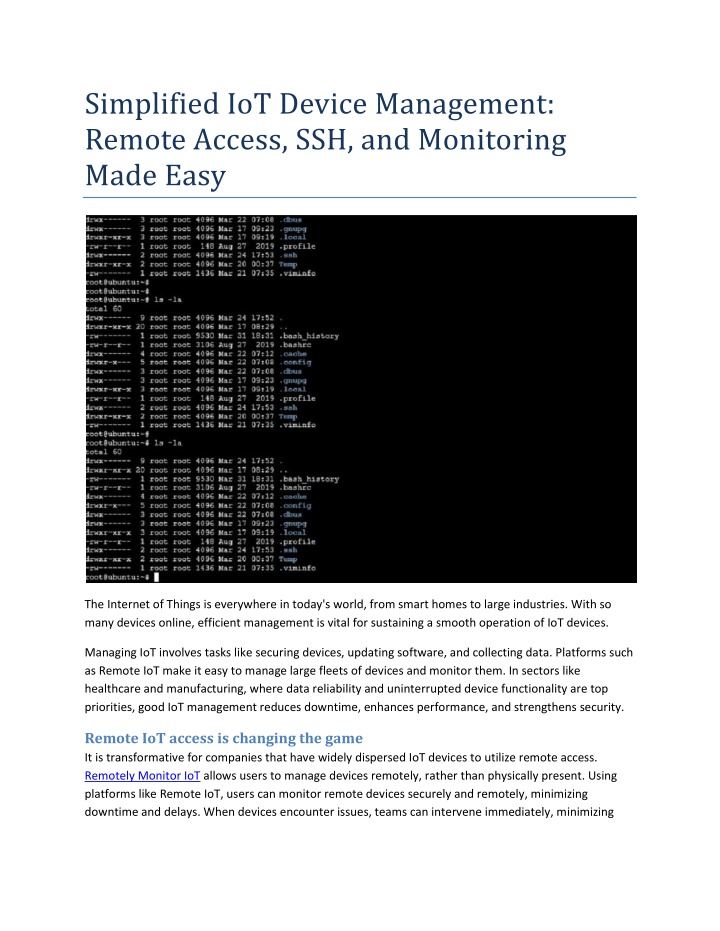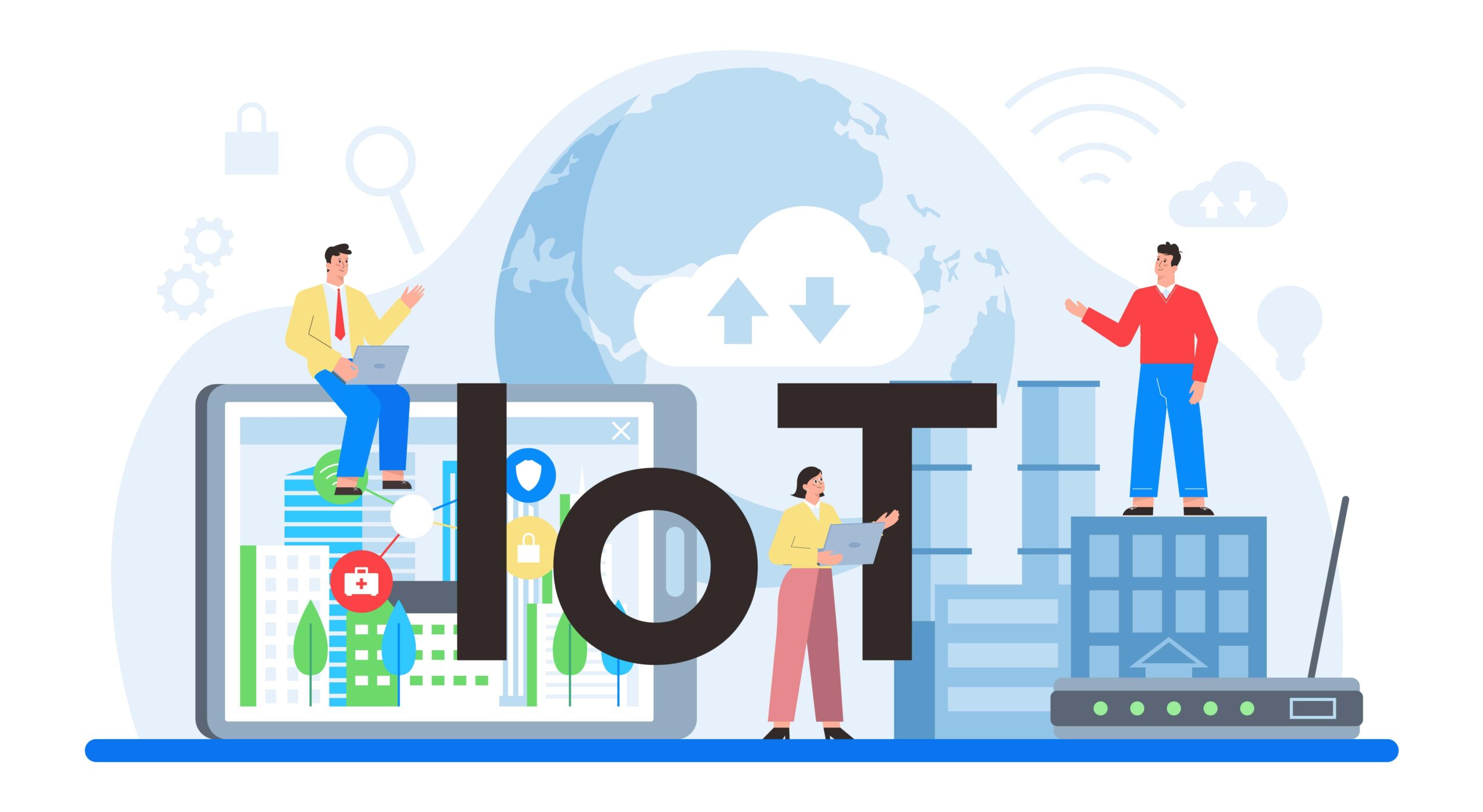Free Remote IoT SSH: Download & Secure Access Guide
Can you truly have secure access to your Internet of Things (IoT) devices from anywhere in the world, without breaking the bank? The answer is a resounding yes, provided you know where to look and how to proceed with caution.
The allure of controlling and managing your IoT devices remotely is undeniable. Whether you're a seasoned developer working on complex projects or a hobbyist tinkering with smart home automation, the ability to access your devices from any location offers unparalleled convenience and control. At the heart of this capability lies Secure Shell (SSH), a cryptographic network protocol that forms the bedrock of secure communication between your local machine and those remote IoT devices. SSH provides a secure channel, encrypting all data transmitted, thus shielding sensitive information from unauthorized eyes. This is vital in the era of increasing cyber threats and data breaches, ensuring your IoT projects remain protected.
However, the landscape of remote IoT management also presents challenges. The internet teems with both legitimate tools and malicious software disguised as such. Downloading software from unverified sources can expose your devices and your network to significant risks. Therefore, it's crucial to approach the quest for free SSH tools with informed caution. The benefits of free downloads are evident, but these must be balanced against the potential dangers.
- Alice Rosenblum Latest News Leaks Community Updates
- Unveiling Aagmaalmen Details Competitors Amp Insights In 2025 Google Discover
The ability to securely manage and control IoT devices remotely is not just a convenience; it's a necessity in today's connected world. Remote IoT VPC SSH on a Raspberry Pi, for example, provides a robust solution for accessing and controlling devices from any location, making it a valuable asset for building scalable connected systems. Such a setup is critical for efficient management and control, allowing you to monitor, configure, and troubleshoot your devices without being physically present. Fortunately, access to tools and resources is available, making this technology accessible to both experienced developers and those just starting.
Consider the practical applications. Imagine being able to monitor your home's security system, manage your smart lighting, or even control industrial equipment from anywhere in the world. This level of control is especially significant in remote locations or when you're traveling.
The foundation of all this lies in your choice of SSH software. Several popular options stand out. Putty, OpenSSH, and Bitvise SSH Client are all widely used and offer varying features. OpenSSH is a standard for many Linux-based systems, while Putty is a popular choice for Windows users. The Bitvise SSH Client presents a more advanced feature set for more complex scenarios.
Setting up SSH for IoT devices involves a few key steps. First, install the chosen SSH client on your local machine. Next, configure your IoT device to accept SSH connections. This often involves enabling SSH in your device's settings and configuring a secure password or, ideally, an SSH key for authentication. Finally, test the connection to verify that everything is set up correctly.
Once SSH access is enabled, several best practices come into play. Always use strong, unique passwords or SSH keys. Regularly update your SSH client and your IoT device's operating system to patch any security vulnerabilities. Be mindful of the network you are using, and avoid connecting to public, unsecured Wi-Fi networks when accessing your devices.
You'll encounter discussions comparing SSH access for IoT devices with other methods of remote access. For instance, VNC (Virtual Network Computing) and RDP (Remote Desktop Protocol) also allow remote access, but SSH offers a more secure and efficient approach. SSH provides a command-line interface, making it ideal for controlling and managing devices, whereas VNC and RDP provide a full graphical interface. Also, SSH encrypts all communication by default.
The world of IoT management offers a plethora of platforms and tools, many of which boast free download options for SSH capabilities. RemoteIoT platform, for example, provides users with the means to manage their IoT devices remotely. Such platforms simplify the process, providing easy-to-use interfaces and tools to streamline device management.
These tools are designed to be accessible to individuals with varying levels of technical expertise. The user-friendly interfaces are intended to simplify the process. The goal is to empower users to take control of their IoT devices securely.
The core of remote access lies in the ability of SSH to offer secure, encrypted communication. Port scanners and hackers are thus unable to access your device's SSH server port directly. This is a critical point.
One method for accessing your IoT device's SSH server is through the use of solutions like SocketXP. SocketXP is a cloud-based IoT device management and remote access platform. Download and installing the SocketXP agent grants you access to remote SSH capabilities. Using it, you enter credentials to gain access to your IoT device, resulting in the command-line interface of your IoT device. The user is then connected and able to start managing the device remotely using SSH.
When accessing your IoT device via SSH from Windows 10, keep the following tips in mind. First, always double-check your IoT device's IP address to avoid connection issues. If you are encountering issues, troubleshoot by verifying that the device is connected to the internet and is properly configured to allow SSH connections.
The demand for secure and reliable IoT solutions is soaring. Secure access to your IoT devices using SSH, VNC, RDP, and public web URLs has never been more important. Start exploring these solutions and establish a secure connection to your devices now.
By understanding how to set up and use SSH, you can greatly enhance your IoT projects. This involves choosing the right software, configuring it securely, and understanding best practices. Whether you're controlling a single device or a network of them, SSH provides a powerful and reliable solution.



Detail Author:
- Name : Joaquin Klocko
- Username : etha80
- Email : oswald04@ankunding.com
- Birthdate : 1997-10-07
- Address : 217 Ottis Stream Suite 862 Christelleview, MN 82421-8096
- Phone : 458.353.2346
- Company : Fritsch, Kozey and Rowe
- Job : Welder-Fitter
- Bio : Et deleniti veniam consequatur odit voluptatem totam aperiam. Quo et molestiae officiis incidunt. Unde totam autem alias. Ut eum maiores ut at.
Socials
linkedin:
- url : https://linkedin.com/in/kirstin1839
- username : kirstin1839
- bio : Aut velit distinctio dolores veniam voluptas ab.
- followers : 3683
- following : 1006
twitter:
- url : https://twitter.com/krajcik1988
- username : krajcik1988
- bio : Commodi eligendi quas aut esse commodi dolores. Deleniti magni in sint in nihil nostrum. Nulla qui doloribus et molestias veniam.
- followers : 3821
- following : 698
tiktok:
- url : https://tiktok.com/@krajcik1983
- username : krajcik1983
- bio : Ipsum minus qui fuga a et. Molestias hic laudantium nisi dicta ducimus.
- followers : 2497
- following : 1645